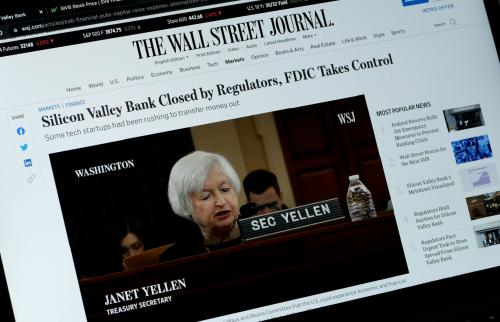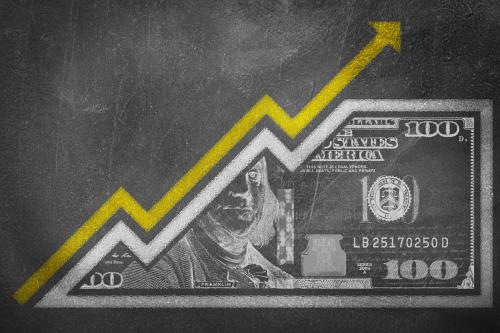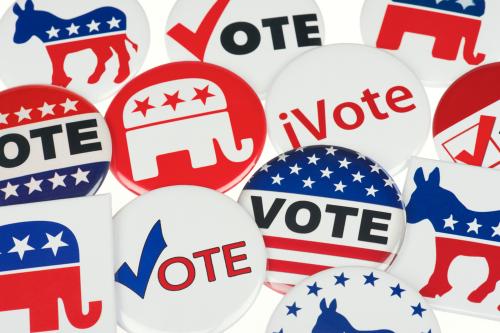Understanding how households form their inflation expectations is of critical interest to central bankers, who often try to influence expectations through their monetary policy actions and communications. Inflation expectations play an important role in consumer and firm decisionmaking and in inflation dynamics. The Federal Reserve, like many other central banks, conducts and monitors a variety of expectations surveys, including the Federal Reserve Bank of New York’s Survey of Consumer Expectations (SCE). This post will describe how we use the SCE data in a novel way to gain insights into the drivers of consumer inflation expectations.
Despite the availability of survey data, identifying the causal drivers of consumer expectations is challenging. For example, suppose that the Federal Reserve announces that it is raising the federal funds rate. Fed officials may hope that this announcement will reduce inflation expectations. But, using monthly survey data, it is difficult to detect whether the announcement has the intended effect, since economic conditions and other policy changes within the month likely also affect expectations. Reverse causality is also an issue, since the Federal Reserve takes inflation expectations into account in its monetary policy decisions.
Two types of approaches have attempted to address this identification challenge. The first approach utilizes randomized control trials, or “information experiments.” In these experiments, the researcher conducting a survey randomizes respondents to be in a control group or in one or more treatment groups. Respondents in the treatment group are exposed to some piece of information, such as information about a recent monetary policy announcement. The difference in expectations between the treatment group and the control group can be interpreted as the causal effect of the treatment on expectations, since exposure to the treatment was random. A benefit of this approach is that it allows for very clean identification of causality. A downside is that consumers participating in an experiment might respond differently to these information treatments than they would to “real world” news.
A second approach involves high frequency “event study” analysis. For this approach, researchers conduct surveys in a small window of days surrounding events or announcements of interest. If the window is sufficiently narrow, differences in expectations in the pre- and post-event groups can be attributed to the event itself. Respondents who take the survey before the event can be thought of as the control group, and respondents who take the survey after can be thought of as the treatment group, where the treatment is the event itself. For example, Drager et al. (2022) surveyed German economics professors a few days before and after the Russian invasion of Ukraine, and find that the respondents surveyed after the invasion have higher inflation expectations. They conclude that the invasion caused the rise in inflation expectations.
These daily surveys are typically only conducted over a relatively small number of pre-selected days. If we wanted to use this approach to study the effects of many different past events on inflation expectations, we would need longer-running, daily survey data. In our research, we show that such data is, in fact, already available. Since June 2013, the SCE has surveyed approximately 1300 household heads each month. The survey is nationally representative and conducted online, and respondents may take the survey up to twelve months in a row. Survey respondents report their expectations of inflation or deflation over the next 12 months.
Crucially for us, the exact date of each survey response is recorded. Thus, we can study the effect on inflation expectations of any event from June 2013 through December 2021. This period includes 72 FOMC announcements, 103 Consumer Price Index (CPI) releases, and 103 nonfarm payroll releases. We estimate how each of these events affects inflation expectations by conducting an “event study” analysis. Essentially, respondents who take the survey in the two days before the event date serve as the control group and respondents taking the survey on the event date or in the following two days as the treatment group. We use our estimates to examine which individual events had the biggest effects on expectations, and conduct a variety of statistical tests to examine which categories of events have effects.
We find that certain especially salient, newsworthy FOMC announcements and data releases move expectations substantially. Many of these occurred during the COVID-19 era, when news about the potential inflationary impacts of the pandemic drew heightened attention to the Federal Reserve and to macroeconomic data releases. For example, of all the 263 events that we considered, the one with the largest effect on expectations was the July 2020 FOMC announcement, which reduced expectations by 2 full percentage points. Fed Chair Jerome Powell said in a press conference that the Fed was “not even thinking about thinking about thinking about raising rates,” and the New York Times reported that the stock market rose in response to the Fed’s promise to support the economy. It seems, as is often the case, that consumers associated “good news” with lower inflation.
Another large reduction in inflation expectations (around 1.1 percentage points) came from the December FOMC 2020 meeting. After this meeting, CNBC quoted Chair Powell’s description of “significant disinflationary pressures around the world” and his take that “it’s not going to be easy to have inflation move up.”
Macroeconomic data releases became especially newsworthy during the pandemic since there was so much uncertainty about how the pandemic would affect inflation and the labor market. Correspondingly, many of the data releases that had the largest effects on consumer expectations occurred during the pandemic. For example, a CPI release in April 2020 reduced inflation expectations by 1.7 percentage points. This release showed that inflation had been lower than expected in March. Later in the pandemic, unexpectedly high CPI reports were also heavily covered, and led to higher consumer inflation expectations. As inflation rose in 2021, coverage of nonfarm payroll reports tended to focus on how the employment situation would affect wages and, in turn, inflation. So, for example, news coverage of the strong jobs report released in July 2021 interpreted the strong labor market as likely to contribute to inflationary pressures. In line with this interpretation, the report boosted inflation expectations by 1.4 percentage points.
We also conduct statistical tests to determine which types of events generally affect consumer expectations. In general, FOMC meetings and macroeconomic releases do affect inflation expectations, and FOMC meetings with either press conferences or federal funds rate changes have more of an effect on expectations. But the direction of the effect on expectations can be hard to predict, and consumers don’t always interpret news the way financial market participants or professional forecasters might. Federal funds rate cuts and rate hikes sometimes raise, sometimes lower, and sometimes have no effect on consumers’ inflation expectations. For example, markets interpreted the rate hike of December 2015—the first rate hike since before the Great Recession—as contractionary, but we detect no change in consumers’ expectations.
The event study methodology that we use is easy to implement, and we anticipate using it in the future to study the effects of other types of news, including political and pandemic-related events, on expectations.
-
Acknowledgements and disclosures
The Brookings Institution is financed through the support of a diverse array of foundations, corporations, governments, individuals, as well as an endowment. A list of donors can be found in our annual reports published online here. The findings, interpretations, and conclusions in this report are solely those of its author(s) and are not influenced by any donation.
Campbell is a consultant for the Federal Reserve Bank of Chicago. The authors did not receive financial support from any firm or person for this article or, other than the aforementioned, from any firm or person with a financial or political interest in this article. The authors are not currently an officer, director, or board member of any organization with a financial or political interest in this article.











